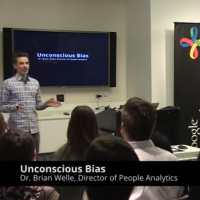What Companies Can Learn from Google’s Workplace Bias Training

Google is one of many tech companies called out for a lack of diversity in their workforce. Even the iconic Google Doodle, which recently celebrated its 16th birthday, has been held up as an example of how biases unconsciously creep into company culture.
Google was embarrassed to admit that during the first seven years, not one woman was featured in Google’s special edition logos. No one thought of Jane Austen or Rosa Parks or Marie Curie when it came to honoring the birthdays of legendary artists, pioneers, and scientists.
To change their company mindset, Google is endeavoring to help employees change their unconscious biases. Google shared some of its practices in a recent blog post, noting that the first step is educating people in ways to identify and understand their biases so that they can start to combat them. Four ways to lessen bias includes:
- Gather facts and measure. For example, how many women and minorities are represented in Google Doodles? Is this a realistic reflection?
- Create a structure for decision-making that includes defined criteria to evaluate options, and use them consistently.
- Pay attention to subtle cues. Again, the Google Doodles.
- Foster awareness and call attention to biases, your own as well as others.
In nature, a monoculture is considered unhealthy, prone to disease and weakness. A good example for agriculture: the Irish potato famine of the 1840s that devastated Ireland's population and economy.
In his book The Botany of Desire, Michael Pollan says, "The Irish potato famine is the great cautionary tale of putting all your eggs in one basket, and the great cautionary tale about monocultures of all kinds. It's a parable about the importance of biodiversity, and it's a parable we forget at our peril."
If you’re interested in learning more, here’s a presentation from Google’s Unconscious Bias At Work workshop, as well as a great PBS documentary of “The Botany of Desire.”

